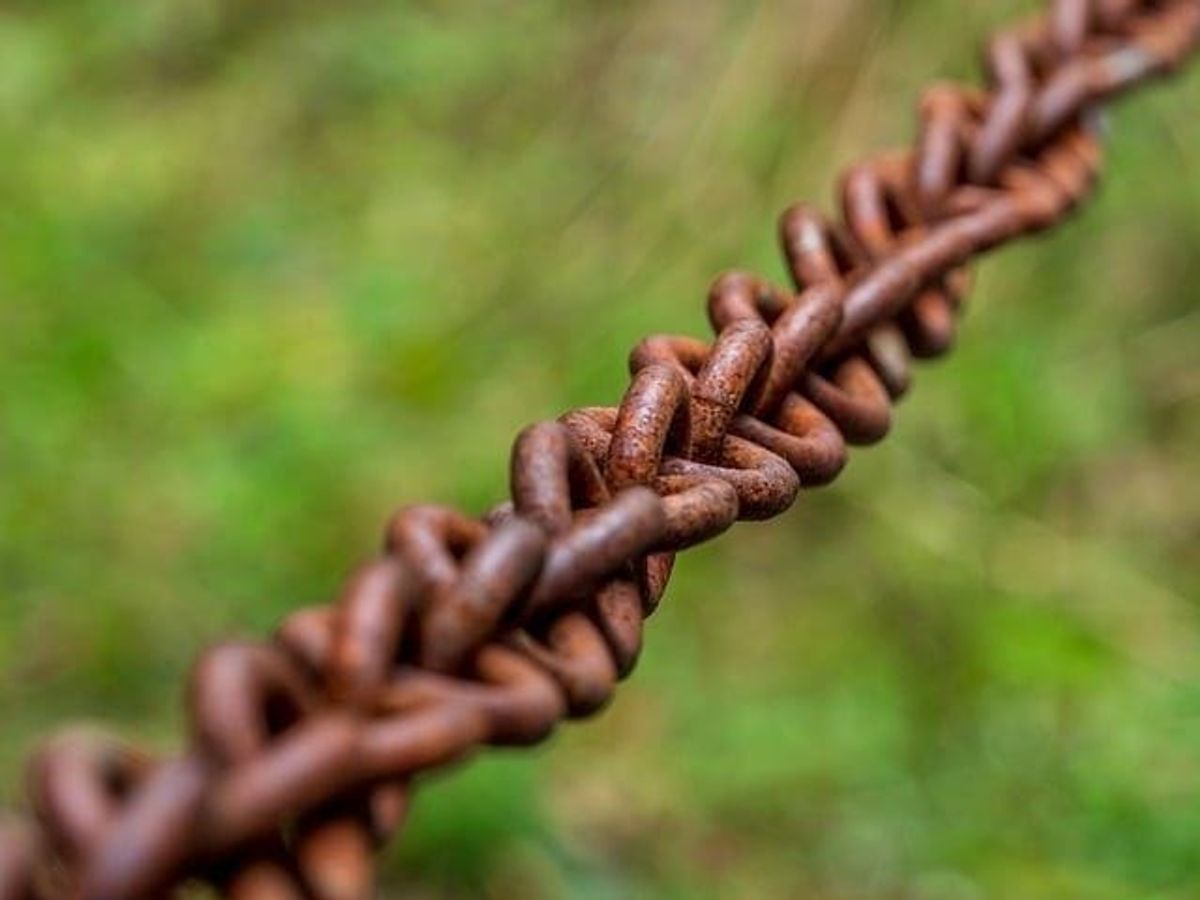Unlocking the Secrets to Great Customer Experience

Delivering a great customer experience isn't just a nice-to-have—it's a necessity.
Quick Summary
Creating a great customer experience is essential in today's competitive marketplace, as customers seek memorable interactions that make them feel valued. By prioritizing seamless, personalized services and actively gathering customer feedback, businesses can identify pain points and enhance satisfaction. Implementing a well-defined customer experience strategy across all touchpoints fosters loyalty and drives growth. Additionally, investing in employee training and leveraging technology solidifies this commitment, ensuring that each interaction contributes positively to customer relationships.
Customers have more choices than ever, and their expectations are higher.
They're not just looking for products or services but for memorable experiences that make them feel valued and understood.
For business owners and brand managers, this means that focusing on customer experience can be a significant competitive advantage.
We'll go into the basics of practical strategies, share great practices, and provide insights into how to create experiences that exceed customer expectations.
Remember, while this blog post offers a basic understanding, it's essential to conduct your own research to tailor these strategies to your business needs.
What Is Customer Experience?

The customer experience covers every way a customer interacts with the company, like checking out the website, reaching out to customer service and even the follow-up after buying something.
It's the cumulative perception that customers have of the brand, shaped by the quality of the products, services, and business processes.
- Customer Expectations: Modern consumers expect seamless, personalized experiences. They want businesses to anticipate their needs and provide solutions proactively.
- Customer Journey: It's crucial to consider the customer experience when they engage with the brand. Understanding customer journeys helps identify touchpoints where one can improve.
Why It Matters
- Customer Loyalty: A great customer experience fosters loyalty. Loyal customers tend to come back for more and spread the word about the business to their friends and family.
- Competitive Advantage: A great customer experience can set one apart from competitors.
- Growth: Happy customers contribute to business growth through repeat business and positive word-of-mouth.
Key Takeaways
- Make sure to prioritize the creation of positive customer experiences at every interaction.
- Understand that their customer experience defines the brand in their eyes.
Why Customer Feedback Is Crucial

Customer feedback is helpful because it shows you what someone is doing well and where they need to step up their game.
It's like a direct line to understanding what the customers want and expect.
- Identify Pain Points: Feedback highlights areas where customers may be experiencing frustration or dissatisfaction.
- Improve Services: Consider using feedback to refine the products and services, leading to better customer experiences.
- Enhance Customer Loyalty: The customers may be loyal to the brand when they see that they value their feedback.
Methods to Collect Customer Feedback
- Surveys and Questionnaires
- Social Media Monitoring: Customers often share their experiences online. Monitoring these platforms can provide unfiltered feedback.
- Direct Communication: Encourage customers to share their thoughts via email or during customer service interactions.
Implementing Feedback into Your Strategy
- Analyze Data: Look for trends and common issues in the feedback one receive.
- Respond Promptly: Acknowledge feedback, especially if it's negative. Customers appreciate timely responses.
- Take Action: Implement changes where necessary and communicate these improvements to the customers.
Key Takeaways
- Regularly seek out customer feedback to stay aligned with their needs.
- Utilize feedback as a tool for ongoing improvement.
- By letting customers know their opinions matter, one can change a bad customer service experience into a great customer service recovery.
Developing a Customer Experience Strategy

Before you can improve customer experience, you need a clear understanding of what you want to achieve.
- Define Your Vision: What does a great customer experience look like for a company?
- Set Measurable Goals: Establish Key Performance Indicators (KPIs) like customer satisfaction scores or customer loyalty metrics.
Creating Personas
Understanding who your customers are is crucial.
- Market Research: Conduct research to gather data about your customers' demographics, interests, and behaviors.
- Creating Personas: Develop detailed profiles of your typical customers to better tailor your services.
Mapping the Customer Journey
Identify every point of interaction between your customers and your business.
- Touchpoints: List out all the ways that customers engage with your brand, whether it's online or in person.
- Pain Points: Identify stages where customers may experience frustration.
Designing the Experience
- Consistency: Make sure that the customer experience remains uniform across all channels.
- Personalization: Use customer data to make customers feel valued.
- Ease of Use: Simplify processes to reduce customer effort, leading to happier customers.
Key Takeaways
- A well-defined customer experience strategy aligns your entire organization toward a common goal.
- Making things personal and easy to use is really important for giving customers a great experience.
- Keep checking and tweaking your strategy based on what your customers are saying and how the market is changing.
Creating Emotional Connections

Customers may stay loyal to a brand they feel an emotional connection with.
- Emotional Connection: Goes beyond transactional relationships, fostering deeper customer loyalty.
- Brand Storytelling: Share your company's story and values to resonate with customers on a personal level.
Strategies to Build Emotional Connections
- Personalized Interactions: Address customers by name and tailor recommendations.
- Exceptional Service: Train team members to exceed customer expectations consistently.
- Community Engagement: Involve your brand in community events or causes that align with your values.
Benefits of Emotional Connections
- Increased Loyalty: Emotionally connected customers are less likely to switch to competitors.
- Word-of-Mouth Marketing: Satisfied customers often become brand advocates.
- Higher Lifetime Value: Customers tend to spend more over time.
Key Takeaways
- Emotional connections can lead to happier customers and stronger loyalty.
- Personalization and exceptional service are effective ways to build these connections.
- The way customers feel about their experience can really set businesses apart in the market.
Leveraging Technology for Better Customer Experience

Digital Customer Experience
Your online presence is often the first point of contact with customers.
- User-Friendly
- Mobile Optimization: With many consumers using mobile devices, a mobile-friendly site is essential.
- Online Support: Implement live chat to provide immediate assistance.
Utilizing Customer Data
- Data Collection: Use tools to gather data on customer behavior and preferences.
- Analytics: Analyze the data to find insights into customer journeys and pain points.
- Personalization: Leverage data to offer personalized recommendations and services.
Key Takeaways
- Technology can make things easier and more personal for customers.
- Proper use of data leads to better understanding and meeting customer needs.
- Investing in tech can help you stand out from competitors who are slow to catch up.
Training Your Team Members

Your team members are the frontline ambassadors of your business.
Their interactions with customers significantly impact how your brand is perceived and can influence customer loyalty and satisfaction.
- Empowered Employees: Empowering your staff to make decisions can lead to better customer experiences.
- Customer Needs Awareness: Team members should have a clear understanding of customer needs and expectations.
- Consistent Service Delivery: Consistency in service ensures that customers receive the same great experience every time they interact with your business.
Training
- Customer Service Training: Consider training that focuses on communication skills, empathy, and problem-solving.
- Product Knowledge: Make sure your team knows your products or services really well so they can answer customer questions with confidence.
- Scenario-Based Learning: Consider using role-playing exercises to prepare team members for various customer interactions, including handling complaints and delivering great customer service.
Fostering a Customer-Centric Culture
- Lead by Example: Management should model the behaviors they expect from their team members.
- Open Communication: Encourage feedback from employees about customer experiences and potential improvements.
- Recognition and Rewards: Acknowledge team members who go above and beyond to deliver exceptional service.
Key Takeaways
- Invest in Your People: Well-trained and motivated employees are essential for delivering a great customer experience.
- Empowerment Leads to Satisfaction: When team members feel empowered, they are more likely to take initiative and create happier customers.
- Culture Matters: Cultivating a customer-focused culture can significantly enhance customer loyalty and satisfaction.
Measuring Success: Key Metrics

To improve customer experience, it is essential to measure it effectively.
Keeping an eye on the important numbers helps you figure out what's working, spot areas for improvement, and make smart decisions based on data.
Essential Metrics to Track
- Net Promoter ScoreDefinition: Measures the likelihood of customers recommending your business to others.
Net Promoter Score
Definition: Measures the likelihood of customers recommending your business to others.
- Why It Matters: A high NPS indicates strong customer loyalty and satisfaction.
Customer Effort Score
- Definition: Assesses how easy it is for customers to interact with your business and resolve issues.
- Why It Matters: Reducing customer effort can lead to better customer experiences and increased loyalty.
Customer Satisfaction Score
- Definition: Gauges overall customer satisfaction with your product or service.
- Why It Matters: Provides immediate feedback on customer happiness and areas needing attention.
Implementing Measurement Tools
- Surveys and Feedback Forms: Use these tools at various points in the customer journey to gather insights.
- Data Analytics: Leverage technology to analyze customer interactions and identify trends.
- Customer Feedback: Encourage your customers to share experiences, whether they're positive or negative.
Using Data to Drive Improvement
- Identify Patterns: Look for recurring issues that may indicate systemic problems.
- Set Benchmarks: Establish performance standards based on your metrics.
- Adjust Strategies: Use insights to refine your customer experience strategy and business processes.
Key Takeaways
- Data-Driven Decisions: Metrics provide a foundation for making informed improvements.
- Continuous Monitoring: Regularly tracking customer experience metrics helps you stay proactive.
- Customer Feedback Loop: Use customer input to refine your offerings and enhance satisfaction.
Exploring Scenarios of Excellent Customer Experiences

Understanding how excellent customer experiences are created can inspire you to implement similar strategies in your business.
Let's explore hypothetical scenarios that demonstrate great practices.
Scenario 1: Seamless Multi-Channel Support
A service company offers support through various channels—phone, email, live chat, and social media.
All channels are integrated, so customer interactions are consistent, and information is readily available regardless of the platform used.
- Outcome: Customers experience convenience and efficiency, reducing their effort and increasing satisfaction.
- Key Elements: Consistency, accessibility, and efficient use of technology.
Scenario 2: Proactive Problem Resolution
A software provider monitors system performance and identifies potential issues before they affect customers.
They reach out proactively to inform customers of the steps being taken to prevent disruptions.
- Outcome: Customers appreciate the proactive communication and feel confident in the company's reliability.
- Key Elements: Proactive communication, transparency, and reliability.
Scenario 3: Exceptional After-Sales Service
A manufacturing company offers comprehensive after-sales support, including easy returns, prompt repairs, and follow-up communications to ensure customer satisfaction.
- Outcome: Customers trust the brand and are more likely to make future purchases and recommend the company to others.
- Key Elements: Responsive support, customer care, and building trust.
Lessons Learned
- Personalization Enhances Satisfaction: Tailoring experiences to individual customer needs can significantly improve satisfaction.
- Consistency Builds Trust: Delivering a consistent experience across all touchpoints strengthens customer confidence.
- Proactivity Reduces Frustration: Addressing issues before they escalate shows customers that you value their experience.
- After-Sales Service Matters: Support doesn't end at the sale; ongoing care can turn customers into brand advocates.
Key Takeaways
- Apply Best Practices: Incorporate elements from these scenarios that align with your business and customer expectations.
- Innovate and Adapt: Be open to new ideas that can enhance the customer experience.
- Customer Journey: Consider the entire journey, from initial contact to post-purchase interactions.
Implementing Continuous Improvement

Implementing a process of continuous improvement ensures your business remains competitive and relevant.
Strategies for Continuous Improvement
- Regular Market ResearchStay Informed: Keep up-to-date with industry trends, customer behaviors, and emerging technologies.
Regular Market Research
Stay Informed: Keep up-to-date with industry trends, customer behaviors, and emerging technologies.
- Understand Competitors: Analyze what others in your industry are doing to identify opportunities for differentiation.
Soliciting Customer Input
- Feedback Mechanisms: Implement systems for customers to provide suggestions and report issues.
- Community Engagement: Foster a sense of community where customers feel their voices are heard.
Reviewing Business Processes
- Process Audits: Regularly evaluate your operations to identify inefficiencies or areas for enhancement.
- Embrace Innovation: Be willing to adopt new technologies or methodologies that can improve customer experiences.
Employee Involvement
- Encourage Ideas: Create an environment where team members can suggest improvements.
- Provide Training: Offer ongoing education to keep skills current and employees engaged.
- Recognize Contributions: Acknowledge team members who contribute to improvements.
Measuring and Adjusting
- Set Clear Goals: Establish what you want to achieve with your improvements.
- Monitor Progress: Use metrics and customer feedback to gauge the effectiveness of changes.
- Be Flexible: Be prepared to adjust based on what the data reveals.
Key Takeaways
- Adaptability Is Key: Being willing to change in response to new information keeps your business competitive.
- Collaborative Effort: Involving both customers and employees enriches the improvement process.
- Commitment to Quality: Continuous improvement reflects a dedication to providing high-quality experiences.
Conclusion

Delivering a great customer experience is a multifaceted endeavor that requires a holistic approach.
By focusing on customer needs, investing in your team, utilizing technology effectively, and committing to continuous improvement, you can create experiences that not only satisfy but delight your customers.
Essential Principles
- Customer-Centric Focus: Try to keep the customer's perspective at the forefront of your decisions.
- Empower Your Team: Your employees are instrumental in delivering exceptional service.
- Measure and Adapt: Use data and feedback to inform your strategies and make necessary adjustments.
- Foster Emotional Connections: Building strong relationships can lead to customer loyalty and advocacy.
- Embrace Change: Stay agile in the face of evolving market trends and customer expectations.
Final Thoughts
Great customer experiences are not just about immediate gains but building a sustainable future for your business.
Remember that every interaction is an opportunity to make a positive impact. By consistently striving for excellence, you set the foundation for lasting success.
Related Articles

Top 2 Reasons Why You Should Establish a Strong Brand
In the past, a family's coat of arms was a way to distinguish it from other clans. It was especially important in battle when a coat of arms could be used to identify an enemy. Today, coats of arms ar

How to Reinvent Your Brand in 5 Steps
Rebranding your business can help you boost revenue. It’ll attract more potential customers to your brand as well as assist you in retaining your existing customer base. If done right, rebranding c

3 Tactics to Make and Keep Customers for Life
In today’s competitive market, businesses that have a large customer base are considered successful. So, if you want to stay at the top and beat the competition, it’s a must for you to attract new cus